In the serene sanctuary of an aquarium, the sudden appearance of ominous black spots on the beloved fish can send ripples of concern through any enthusiast’s heart. Black spot disease, a stealthy intruder, casts a shadow over the beauty of the aquatic haven. These insidious parasites, known as Neascus, discreetly infiltrate your fish’s world, leaving behind a telltale sign of their presence—dark, foreboding spots on the fish’s body.
Content Table
Picture this: Your once vibrant and lively fish now bear these enigmatic marks, their health potentially compromised. Their behavior might alter, showing signs of discomfort and disquiet. As a caretaker, witnessing your aquatic companions endure distress, loss of appetite, and potential vulnerability is undeniably distressing.
But fear not, for within this challenge lies the opportunity for understanding and resolution. Join me on a journey as we unravel the intricacies of black spot disease in fish, exploring its impact, identifying susceptible species, and most importantly, delving into the art of effective cure – how to cure black spot disease in fish.
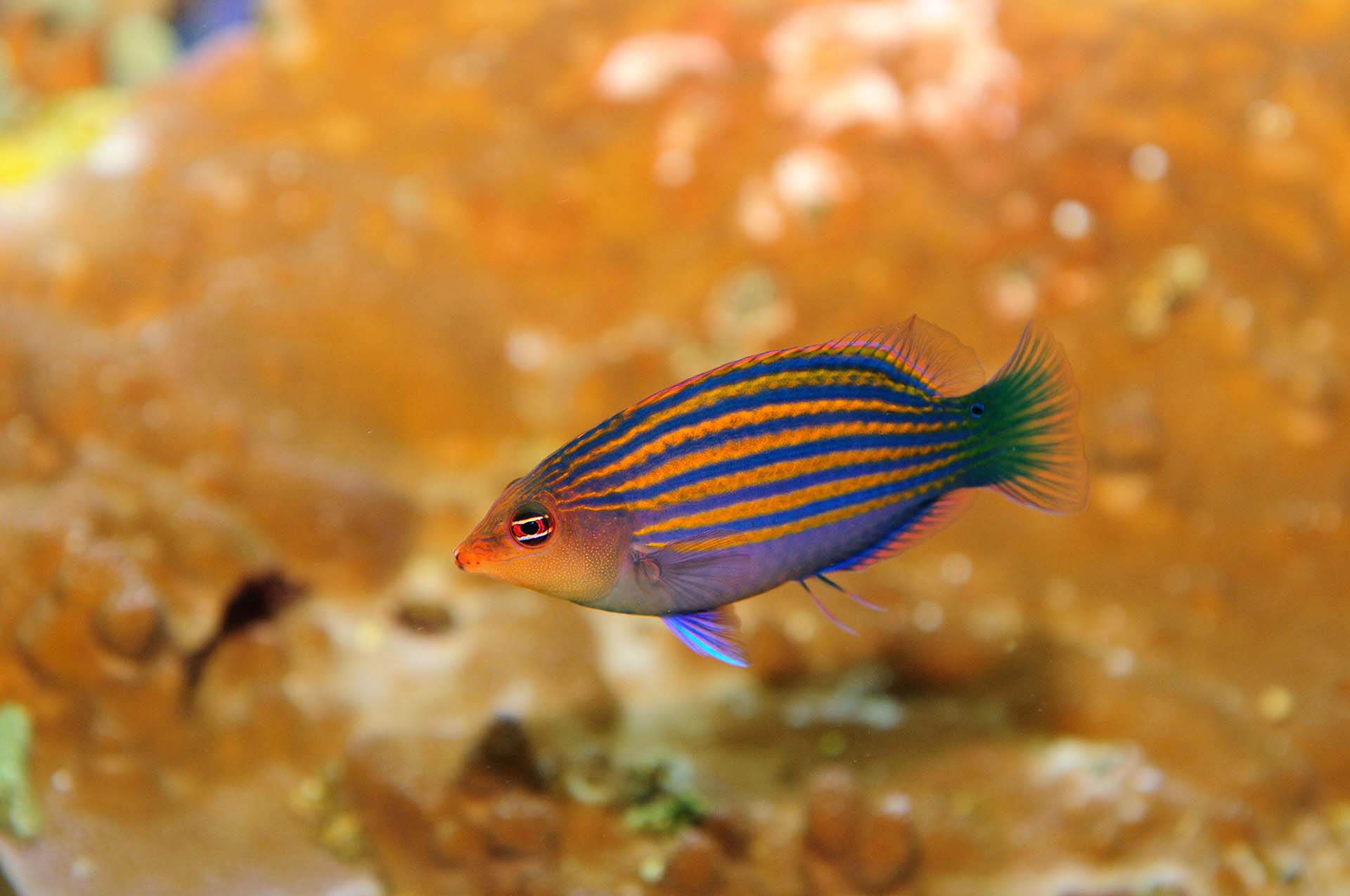
What is Black Spot Disease in Aquarium Fish
Black spot disease, caused by the larvae of the trematode Neascus, is a prevalent ailment among aquarium fish. These microscopic parasites infiltrate the fish through exposure to infected snails or contaminated water sources. Once inside the fish’s body, the parasites form cysts, leading to the characteristic appearance of dark spots on the fish’s skin or fins.
Understanding the nature and progression of black spot disease is pivotal in promptly addressing and mitigating its impact on aquarium fish health. By recognizing the signs and causes, aquarists can take proactive measures to prevent and effectively treat this common ailment, ensuring the well-being of their aquatic companions.
Causes of Black Spot Disease
The primary culprit behind black spot disease is the presence of Neascus parasites in the aquarium environment. These parasites primarily thrive in stagnant or poorly circulated water, making aquariums with inadequate filtration or high organic matter content more susceptible to infestations.
Signs of Black Spot Disease
Identifying this condition involves observing the development of small, round, or oval-shaped dark spots on the fish’s body or fins. The spots may range in size and density, appearing as clusters or scattered markings. Additionally, affected fish might exhibit behavioral changes such as rubbing against objects, increased lethargy, or reduced appetite.
Behavioral Implications
The presence of black spot disease can cause discomfort and irritation in affected fish. They may show signs of distress by flashing, for example, rapidly swimming and rubbing against surfaces, attempting to scrape off the parasites, or becoming more reclusive due to the discomfort caused by the cysts.
Impact on Fish Health
While black spot disease is generally not fatal in its early stages, severe infestations can compromise the fish’s immune system and lead to secondary infections. Moreover, the stress induced by the parasite infestation can weaken the fish, making them more susceptible to other diseases.
Black Spot Disease Fish
Understanding the susceptibility of these fish species to black spot disease enables aquarium enthusiasts to implement proactive measures, ensuring regular observation, and swift action upon detection to safeguard their aquatic companions’ health and well-being.
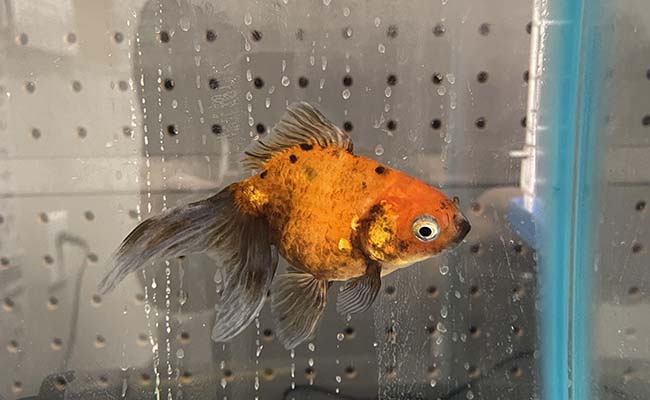 |
| Adored for their vibrant hues, goldfish are unfortunately prone to black spot disease. Their sensitive nature and frequent interactions with various water sources heighten their susceptibility to Neascus parasites. Vigilance in monitoring these fish is essential for early detection and treatment. |
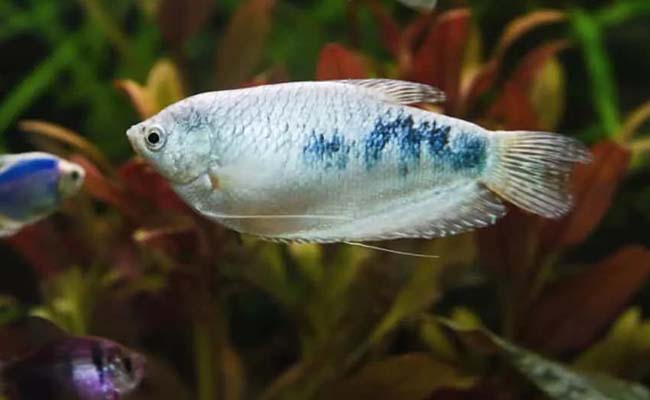 |
| Gouramis, known for their grace and diverse colorations, often fall victim to black spot disease due to their susceptibility to parasite infestations. Their labyrinth organ, allowing them to breathe atmospheric air, exposes them to external elements, making them more prone to infections as well as Iridovirus Dwarf. |
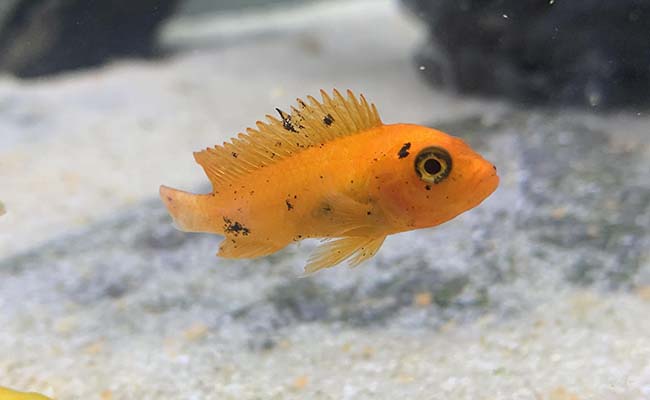 |
| A beloved addition to many aquariums, cichlids exhibit diverse behaviors and stunning appearances. However, their propensity for territorial disputes and frequent substrate interactions increases their vulnerability to Neascus parasites, leading to the manifestation of black spots. |
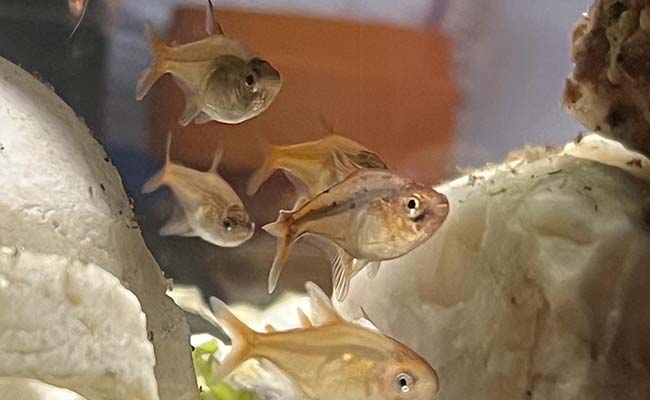 |
| Tetras, cherished for their schooling behavior and vibrant colors, also face susceptibility to black spot disease. Their shoaling tendencies and occasional stress due to changes in water conditions make them potential targets for these parasitic infections. |
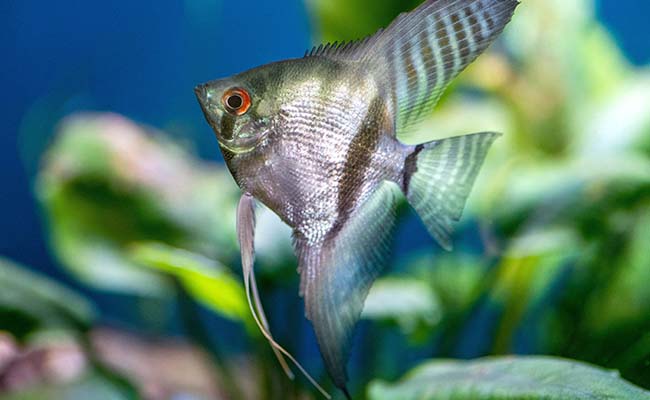 |
| Angelfish, with their majestic appearance and unique personalities, are not exempt from the grasp of black spot disease. Their susceptibility often stems from stress caused by poor water quality or sudden changes in the aquarium environment. |
How to Cure Black Spot Disease On Fish
Curing Black Spot Disease in Parrot Fish
Curing black spot disease in parrot fish demands a systematic approach of isolation, targeted treatment, and vigilant care. By providing a conducive environment and administering appropriate medication, you can aid your parrotfish in overcoming this challenge, restoring its vibrant health and vitality within your aquarium.
Identification and Isolation
Upon noticing the characteristic black spots on your parrot fish, swift action is essential. Carefully observe the affected fish and promptly transfer it to a quarantine tank to prevent potential spread to other tank mates. Isolation is crucial for the focused treatment of black spot disease fish.
Targeted Treatment
Treating black spot disease in parrot fish involves employing medications specifically designed to combat parasitic infections. Look for remedies containing praziquantel or formalin, which effectively target the Neascus parasites causing the black spots. Follow the instructions provided with the medication diligently to ensure proper dosage and application.
Quarantine Tank Environment
Creating an optimal environment within the quarantine tank aids in the fish’s recovery. Maintain pristine water conditions by performing regular water changes and closely monitoring water parameters. A stress-free environment encourages healing and boosts the fish’s immune system, aiding in its fight against parasites.
Observation and Follow-Up
After initiating treatment, closely monitor the parrot fish for any signs of improvement. Be patient, as the healing process may take time. Regularly assess the fish’s behavior, appetite, and the progression of the black spots. If necessary, continue treatment as recommended by the medication instructions or seek guidance from a qualified aquarium specialist.
Post-Treatment Care
Once the parrot fish shows signs of recovery and the black spots begin to fade, gradually reintroduce it to the main aquarium. Continue observing its health and maintaining optimal tank conditions to prevent a resurgence of the black spot disease.
In Summary
Black spot disease, caused by Neascus parasites, poses a threat to aquarium fish, including susceptible species like parrot fish. Swift identification, isolation, and targeted treatment using praziquantel or formalin-based medications are essential. Maintaining pristine water conditions in a quarantine tank aids in the fish’s recovery.
Observing the fish’s progress, ensuring post-treatment care, and reintroduction to the main tank upon recovery completes the comprehensive approach to curing this ailment.

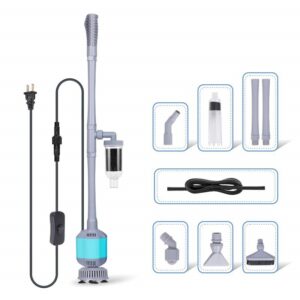
Leave a comment